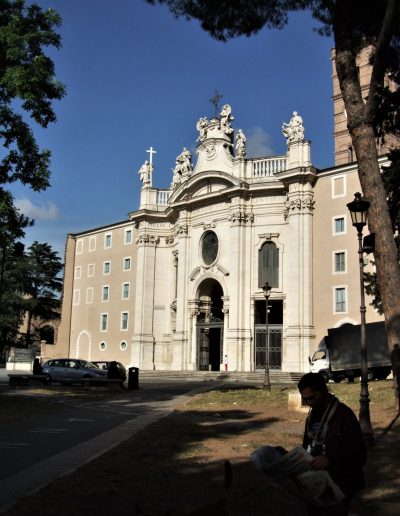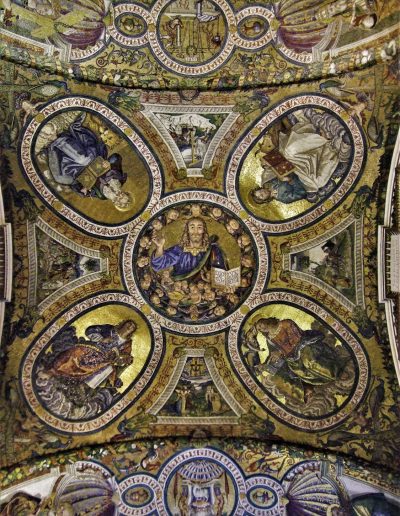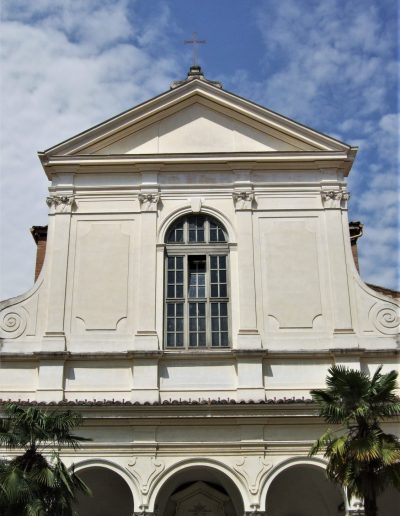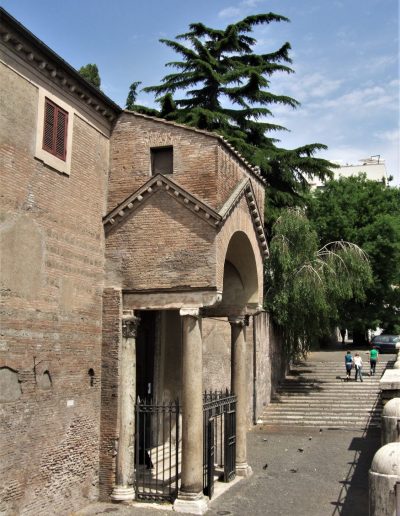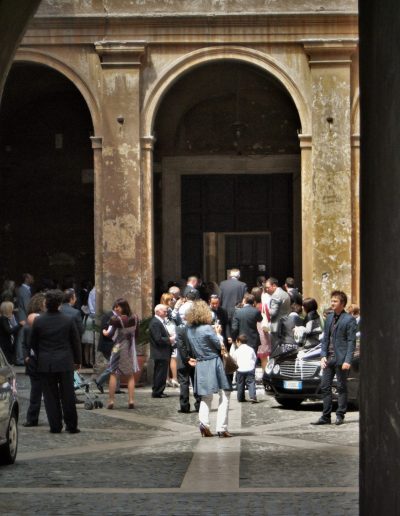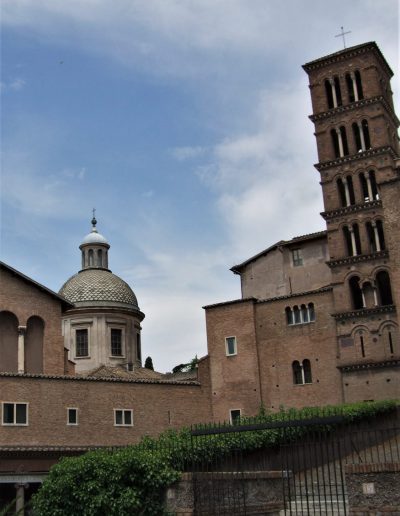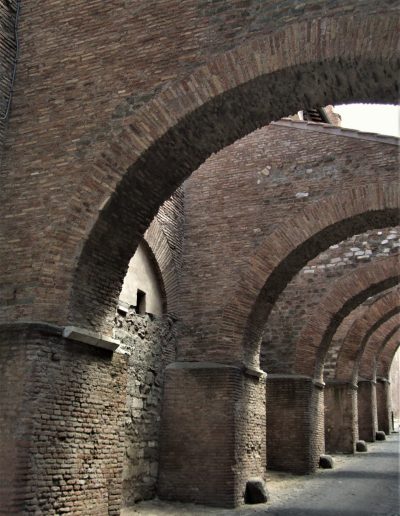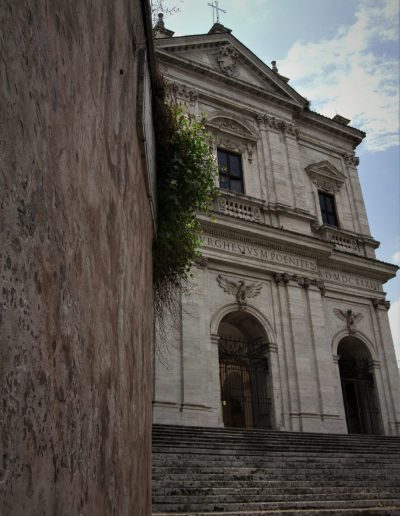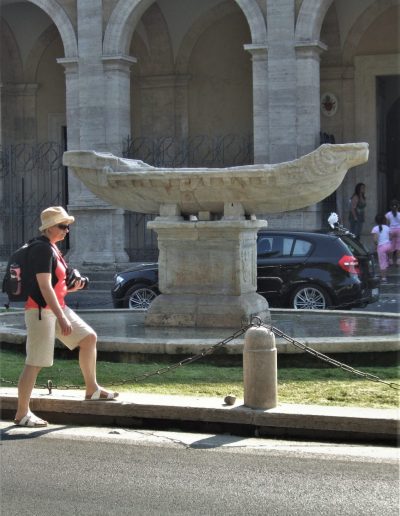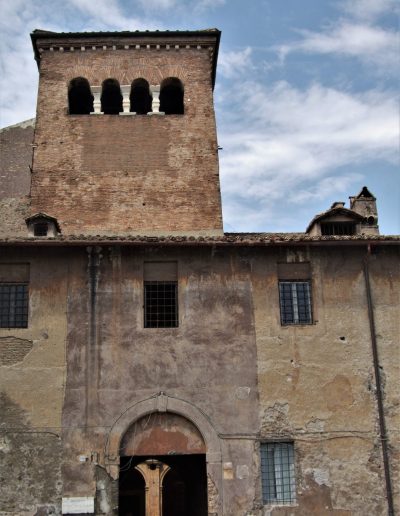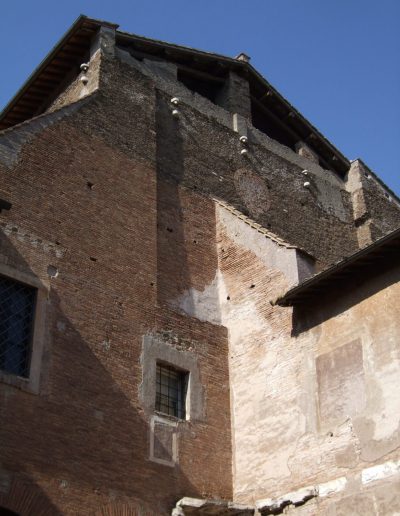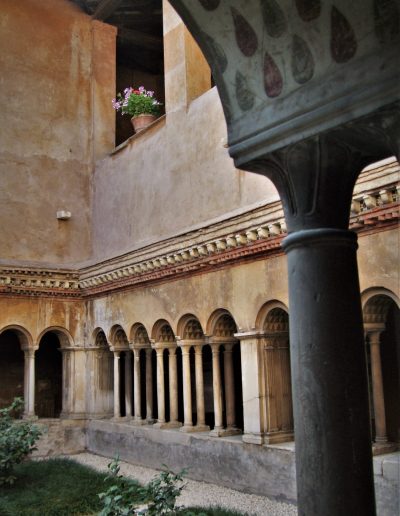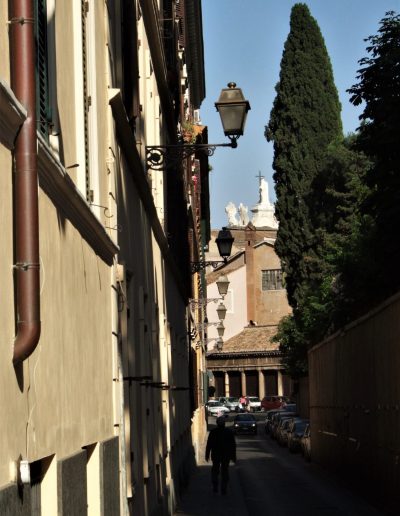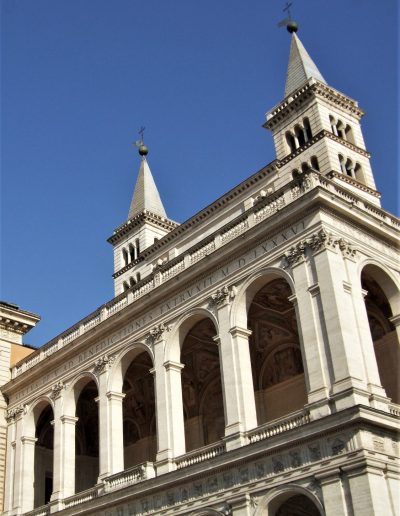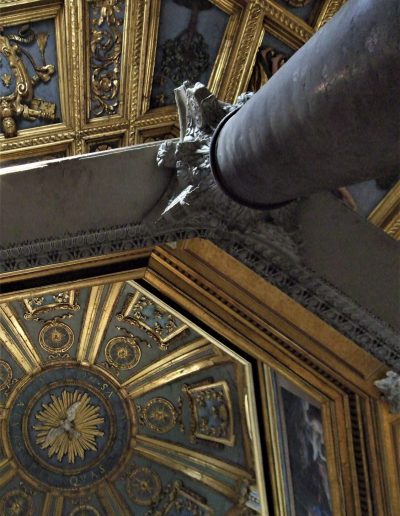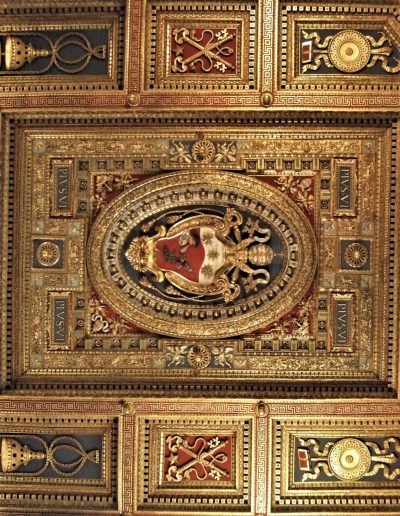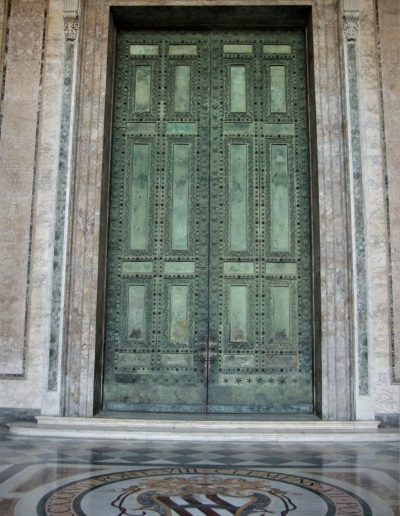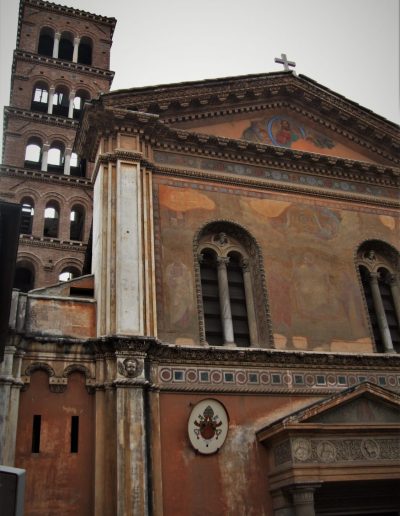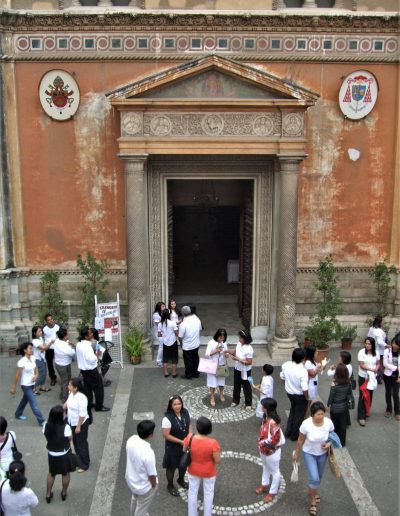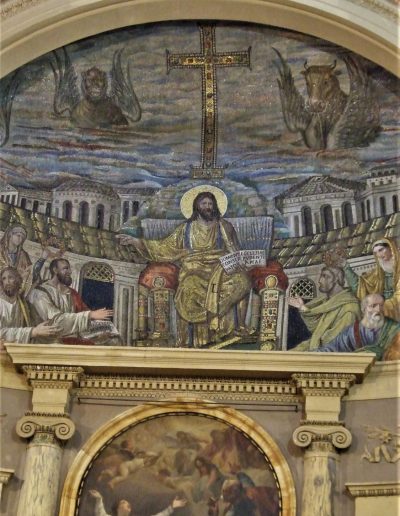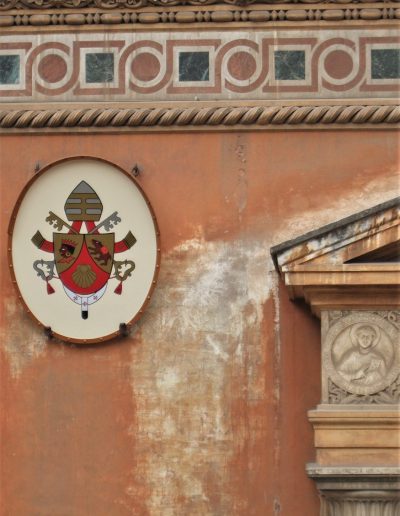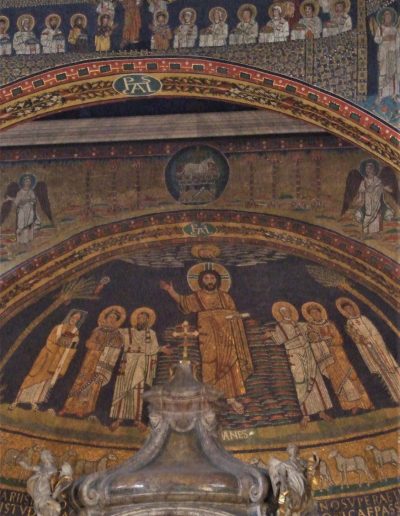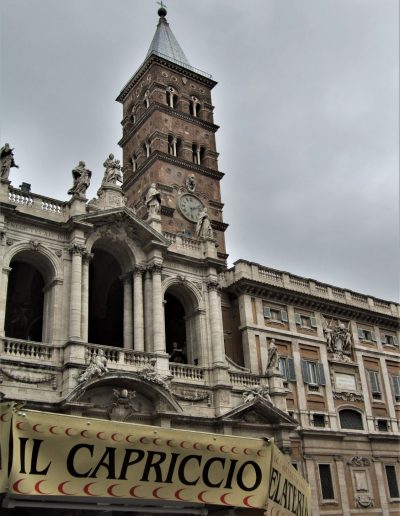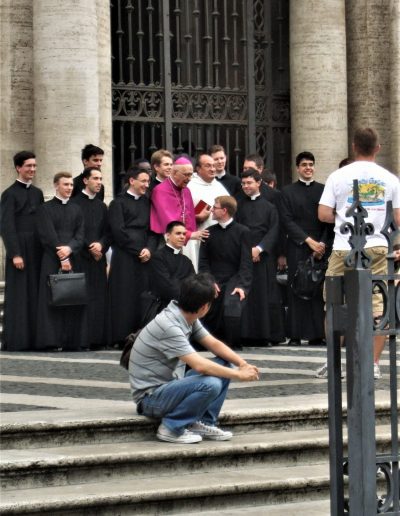- One of the reasons we chose to stay in this part of Rome is that it’s a great place to see the trajectory of Christianity from minor cult in pagan Rome to state religon of an empire. Over a couple of days we walked between a series of buildings that illuminate this period of history.
- Travel Tip – Don’t, as we did, try to visit the churches on the last Saturday of Spring because they’ll have weddings going on!
- Santa Croce in Gerusalemme was founded in 329 by Saint Helena, Empress of the Roman Empire and mother of the Emperor Constantine the Great who legalised Christianity in 313. Helena had a church constructed to house relics she brought back from the Holy Land. It is said that these included three chunks of Christ’s cross, a nail, two thorns from his crown, and the finger that a doubtful Saint Thomas thrust into Christ’s wound. As well as a bunch of soil from Jerusalem. Quite a haul, and one that sparked something of a craze in relic hunting.
- When we first visited Rome, one of the things that struck us was how layered it is. Rome seems to have been continuously built on top of itself over time and the modern city stands well above many of the ancient ruins. The Basilica of San Clemente is an excellent place to see this, with a 12th C church built on top of a 4th C church that was razed by the Normans in 1084, built on top of an insula (apartment building) destroyed in the Great Fire of 64 AD. The oldest buildings are almost 20 metres below the newest ones. Saint Clement was the fourth Pope, exiled by the Emperor Trajan for his preaching and eventually drowned in the Black Sea with an anchor tied around him. No photos are allowed inside San Clemente.
- We walked along an ancient Roman road called the Clivio Scauro to the San Gregorio Magno, a Baroque church built on the site where Pope Gregory I lived (r. 590 – 604). The building was closed when we visited with a sign saying there was no entry until the Fire Brigade said it was safe. That didn’t sound promising. Next stop was Santa Maria in Domnica to which the locals add ‘alla Navicella’ or ‘little ship’ because of the Roman ship statue that stands outside. The site used to house Roman firefighters (vigiles) then a chuch was built in the 7th C and remodelled in the 9th C with a lovely apse mosaic.
- Santi Quattro Coronati is an ancient basilica dating back to the 4th C devoted to four anonymous martyrs. It’s set in a lovely part of Rome which is relatively quiet and green. Like San Clemente and others it was razed by the Normans then rebuilt as a fortified monastery albeit to smaller dimensions. The much larger original apse is still visible from the outside. It has a lovely cloister dating to 1220.
- The Archbasilica of San Giovanni in Laterano is the cathedral church of Rome. It is said to be the oldest public church in the city and the oldest basilica of the Western world. You wouldn’t necessarily know it however. There are few traces left of its origins from 313, and subsequent rebuilding and restoration has been fairly unsubtle. The fifteen 7-metre high statues out front telegraph the intentions.
- The basilica of Santa Pudenziana stands on a site where a church was first built in the 4th C. It’s also been continuously restored and remodelled though the apse mosaic from the early 5th C remains.
- The basilica Santa Prassede dates from the 9th C and has excellent mosaics, considered to be the finest expression of Byzantine art in Rome.
- Our last stop was the Basilica di Santa Maria Maggiore. It has an impressive Baroque facade that shrouds a basilica church from the 5th C with some impressive mosaics.
- Taken as a whole this walking tour gave us a great sense of how Rome continued to be built, razed, rebuilt, restored, over and over again according to the dominant belief system of the day. It’s quite a history.

